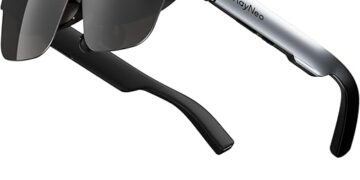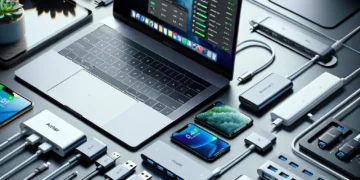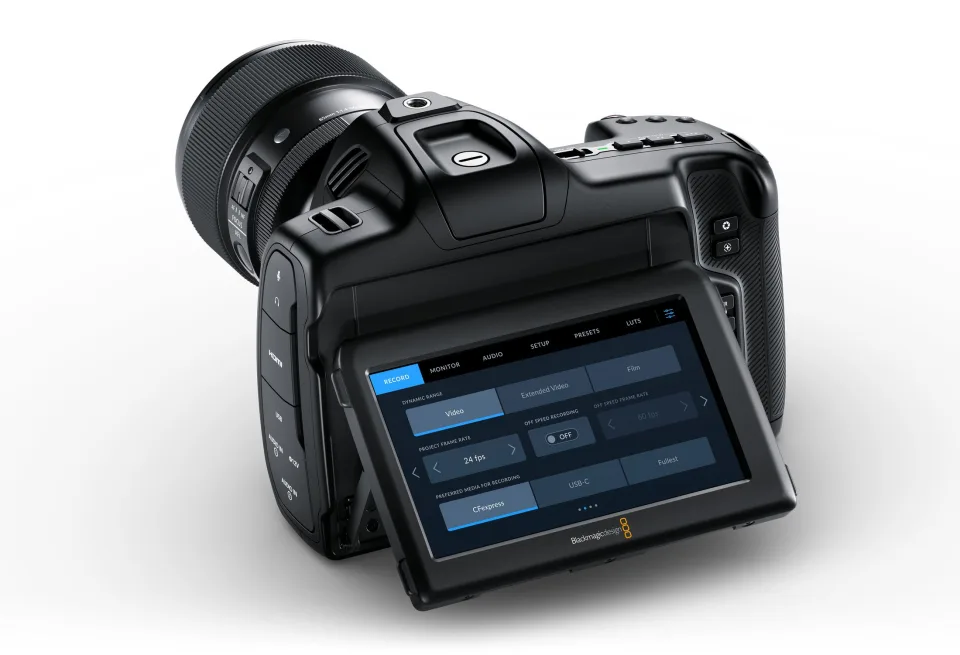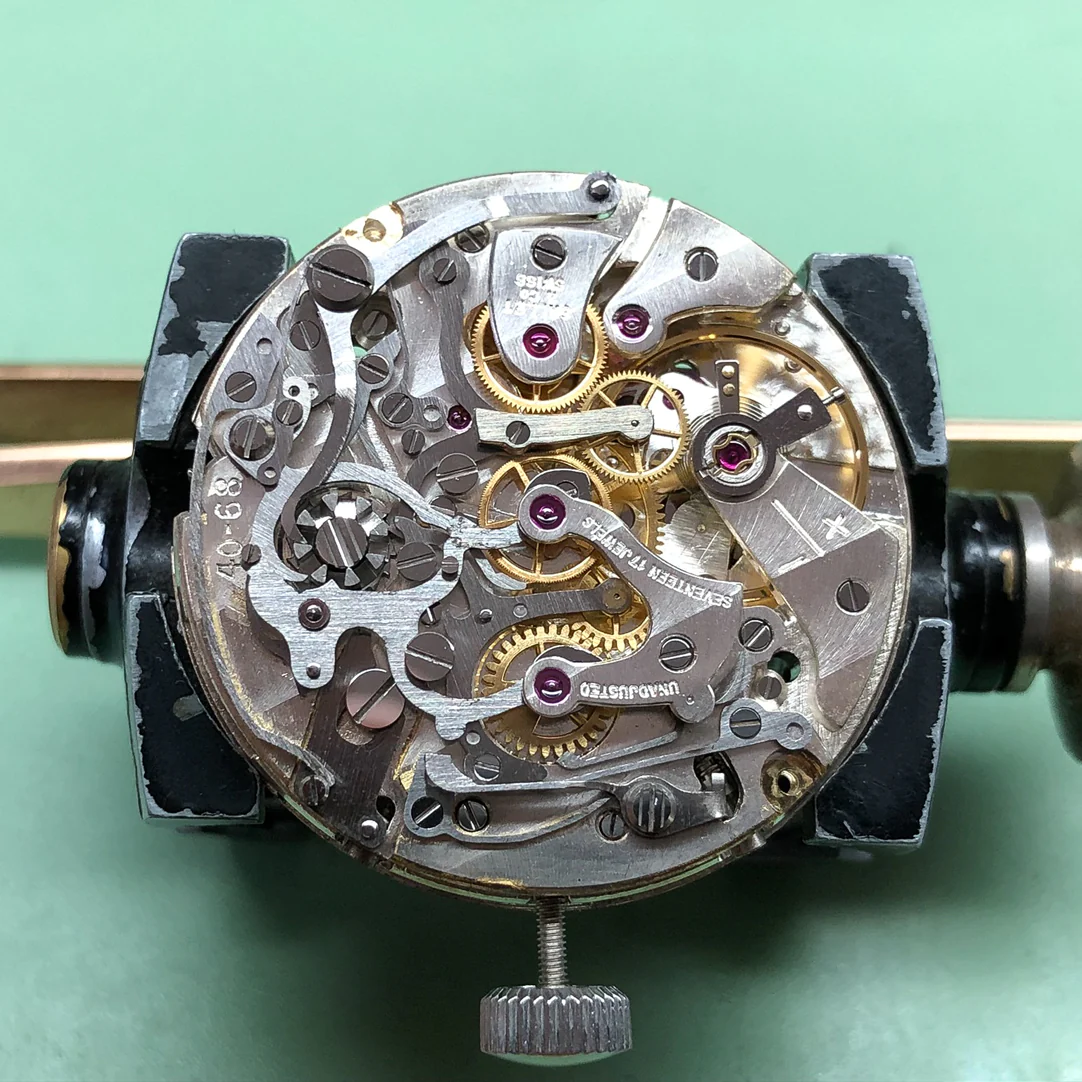Medical students are learning to use surgical robots for enhanced surgical techniques alongside traditional methods. Explore the integration of robotic surgery into medical education, its benefits, challenges, and future advancements.
In the world of medicine, surgical techniques are constantly evolving, and that includes training the next generation of surgeons. Nowadays, medical students are not only learning how to use traditional surgical tools, but they are also being trained in the use of surgical robots. One popular robot in the field is the Da Vinci Surgical System, which utilizes four surgical arms controlled by a console. However, it is important to note that the robot itself is not autonomous; rather, it is a tool that surgeons use to enhance their capabilities. Through the use of simulators and advancements in virtual reality, medical education is adapting to incorporate training in robotic surgery. This article will explore the integration of surgical robots into medical education, the benefits and challenges they bring, and the potential future advancements in this field.
Medical students training in surgical robotics
Introduction
Medical students today are being trained in a variety of surgical techniques, including the use of robotic surgery. Alongside traditional surgical methods, students are now learning how to operate surgical robots such as the Da Vinci Surgical System. This article will explore the use of robotic surgery, the evolution of medical education, the role of surgical robots in training, the exploration of new technologies in surgical education, future developments in surgical robots, challenges in teaching robotic surgery, and conclude with an overview of the topic.
The use of robotic surgery
Robotic surgery has become increasingly popular in recent years. The Da Vinci Surgical System, developed by Intuitive, is one of the most widely used surgical robots. It features four surgical arms that are controlled by a console. The robot serves as a tool that the surgeon operates, rather than an autonomous entity. The console allows the surgeon to control the movements of the robotic arms while providing a clear 3D view of the surgical site. This technology offers advantages over traditional laparoscopic surgery, including improved precision and dexterity.
Evolution of medical education
Medical education has evolved to incorporate training in robotic surgery. Students are now transitioning from mere observation to active participation in surgical procedures. This transition is facilitated by simulator training, where students practice operating the robotic system in a controlled environment. Proficiency measures are being developed to assess students’ skills in robotic surgery, and new curricula are being designed to ensure comprehensive training. Robotic surgery provides unique educational benefits, allowing students to have the same view and perspective as the lead surgeon.
The Da Vinci Surgical System
The Da Vinci Surgical System is a groundbreaking robotic technology that has revolutionized the field of surgery. It consists of an almost 8-foot robot with four surgical arms. The robot is controlled by a surgeon from a console, while a bedside assistant assists with instrument insertion and removal. The console operation allows for precise and delicate movements, and the use of wrist control enhances surgical capabilities. The robot provides a 3D view of the surgical site through a camera inserted into the patient, offering a clear visualization for the surgeon.
Advantages over traditional laparoscopic surgery
Robotic surgery offers several advantages over traditional laparoscopic surgery. The precision and dexterity provided by the robotic arms allow for more delicate and intricate procedures. The 3D visualization enhances the surgeon’s view, enabling better accuracy and reduced risk. Additionally, the minimally invasive nature of robotic surgery leads to smaller incisions, less scarring, and faster recovery times for patients. These benefits have contributed to the increasing popularity of robotic surgery in various medical specialties.
Increasing popularity of robotic surgery
Robotic surgery has experienced significant growth in usage in recent years. A study published in the Journal of the American Medical Association revealed that the use of robotic surgery increased from 1.8 percent in 2012 to 15.1 percent in 2018. This surge in popularity can be attributed to the growing acceptance and adoption of robotic surgery within the medical community. In particular, urological and gynecological surgeries have seen a substantial increase in the use of robotic techniques.
Statistics of robotic surgery usage
The statistics related to the usage of robotic surgery highlight its upward trend. The aforementioned study in the Journal of the American Medical Association reported a significant increase in the utilization of robotic surgery from 2012 to 2018. The data indicates a willingness among surgeons and medical professionals to embrace this advanced technology and incorporate it into their practices. As robotic surgery becomes more established, its benefits and positive outcomes are becoming increasingly evident.
Growing acceptance and adoption
The acceptance and adoption of robotic surgery have been driven by its proven benefits. Surgeons are witnessing the advantages of enhanced precision, improved outcomes, and faster recovery times for their patients. As more surgeons become proficient in using robotic systems, the knowledge and expertise are being shared within the medical community, fostering a culture of acceptance and adoption. This growing acceptance paves the way for further advancements in surgical robotics and their incorporation into medical education.
Applications in urological and gynecological surgeries
Robotic surgery has found particular success in urological and gynecological surgeries. Procedures such as prostatectomies, hysterectomies, and myomectomies have seen increased utilization of robotic techniques. The precision, accuracy, and visualization offered by robotic surgery make it an ideal option for these complex procedures. The use of surgical robots in these specialties has resulted in reduced complications, shorter hospital stays, and improved patient outcomes.
Role of surgical robots in medical education
Surgical robots play a crucial role in medical education, providing students with an opportunity to develop skills and proficiency in robotic surgery. The transition from observation to active participation is facilitated by simulator training, where students can practice operating the robotic system in a controlled environment. This hands-on experience allows students to develop the necessary technical skills and gain familiarity with the robotic technology. Moreover, simulator training helps students understand the unique aspects of robotic surgery, such as the console operation and the functions of the surgical arms.
Transition from observation to active participation
In traditional medical education, students primarily observe surgeries conducted by experienced surgeons. However, with the advancement of robotic surgery, students are now able to actively participate in procedures. This transition from passive observation to active engagement provides students with valuable firsthand experience and a deeper understanding of the intricacies involved in robotic surgery. By actively operating the surgical robot under supervision, students acquire the necessary skills and confidence to perform robotic procedures independently in the future.
Simulator training for students
Simulator training is a critical component of teaching robotic surgery to medical students. Simulators provide a safe and controlled environment for students to practice operating the robotic system without any risk to patients. Through simulator training, students can become familiar with the console operation, hand-eye coordination, and the manipulation of robotic arms. This training allows students to develop proficiency before they progress to working on actual patients. Simulator training also enables educators to assess and measure students’ skills, ensuring a comprehensive and standardized training experience.
Importance of proficiency measures and new curricula development
Proficiency measures are essential in evaluating and assessing students’ skills in robotic surgery. Research is being conducted to identify objective measures of proficiency in various robotic procedures. These measures serve as benchmarks to ensure that students reach a certain level of competency before performing surgeries independently. Additionally, new curricula are being developed to incorporate robotic surgery training into medical education. These curricula aim to provide comprehensive instruction and ensure that future surgeons are well-equipped to utilize robotic technology in their practice.
Educational benefits of robotic surgery
Robotic surgery offers unique educational benefits for medical students. By operating the surgical robot from the console, students have the same view and perspective as the lead surgeon. This immersive experience allows students to understand the decision-making process, observe surgical techniques in real-time, and gain insights into the complexities of robotic surgery. The 3D visualization provided by the robotic system enhances the educational experience, enabling students to grasp the intricacies of surgical procedures more effectively.
Exploration of new technologies in surgical education
Advancements in technology are constantly being explored to enhance surgical education. Virtual reality (VR) is one such technology that shows great potential in enhancing surgical training. VR allows students to simulate surgical procedures in a virtual environment, offering a realistic and immersive experience. This technology enables students to practice complex procedures, develop their skills, and receive immediate feedback. Integration of other technologies, such as augmented reality and haptic feedback, further enhances the educational value of surgical training.
Virtual reality and its role in enhancing surgical training
Virtual reality has emerged as a promising tool in surgical education. Through VR simulations, students can practice surgical procedures in a virtual environment that closely replicates real-life scenarios. This technology provides an immersive and interactive experience, allowing students to develop their skills and proficiency without the need for direct patient involvement. VR simulations also offer the opportunity for repeated practice, enabling students to refine their techniques and gain confidence in their abilities.
Integration of other technologies in education
In addition to virtual reality, other technologies are being integrated into surgical education to enhance the learning experience. Augmented reality overlays digital information onto the real-world surgical field, providing additional guidance and information for students. Haptic feedback technology recreates the sense of touch, allowing students to experience the tactile sensations associated with surgical procedures. By integrating these technologies, surgical education becomes more interactive, engaging, and effective in preparing students for real-world surgical scenarios.
Potential advancements in surgical education
The exploration of new technologies holds the potential for significant advancements in surgical education. As virtual reality, augmented reality, and haptic feedback continue to evolve and improve, the educational opportunities for medical students will expand. Realistic and immersive simulations can provide a safe and controlled environment for students to practice complex procedures. Additionally, advancements in artificial intelligence may enable personalized and adaptive training programs, tailored to each student’s individual needs and learning progress.
Future developments in surgical robots
The future of surgical robots holds several exciting possibilities. One key area of focus is reducing the costs associated with robotic surgery. As technology advances and becomes more accessible, the costs of robotic systems are expected to decrease, making them more affordable for medical institutions. This reduction in costs will enhance access to robotic surgery, allowing a wider range of patients to benefit from this advanced technology. Furthermore, emerging technologies, such as miniaturized robots and surgical nanobots, may revolutionize surgical procedures and expand the capabilities of robotic surgery.
Reducing costs and improving access to robotic surgery
The cost of implementing robotic surgery can be a significant barrier for many medical institutions. However, ongoing advancements and innovations are expected to drive down the costs associated with robotic systems. As robotic technology becomes more affordable and accessible, the adoption of robotic surgery is likely to increase. This reduction in costs will democratize access to robotic surgery, enabling a larger number of medical institutions to provide their patients with the benefits of this advanced technology.
Emerging technologies and their impact
Emerging technologies have the potential to shape the future of surgical robotics. Miniaturized robots, capable of navigating through intricate anatomical structures, could revolutionize the field by enabling less invasive procedures. Surgical nanobots, microscopic robots that can perform precise tasks within the human body, may offer unprecedented levels of precision and control. These emerging technologies have the potential to expand the applications of robotic surgery and push the boundaries of what is currently possible in surgical procedures.
Potential benefits for patients and surgeons
The future developments in surgical robots hold significant potential benefits for both patients and surgeons. Patients can expect improved outcomes, reduced complications, and faster recovery times with the advancements in robotic surgery. The use of less invasive procedures enabled by robotic systems minimizes trauma to the body and results in smaller incisions, less scarring, and decreased post-operative pain. Surgeons, on the other hand, can benefit from enhanced precision, dexterity, and visualization, enabling them to perform intricate procedures with greater confidence and accuracy.
Challenges in teaching robotic surgery
While the integration of robotic surgery into medical education offers numerous benefits, several challenges need to be addressed. Accessibility to simulators, which are crucial for training, can be a limiting factor in some institutions. The cost considerations associated with acquiring and maintaining robotic systems can also pose challenges for medical schools and training programs. Additionally, the availability of training resources and the infrastructure required to support robotic surgery education need to be carefully managed and expanded to meet the increasing demand for training in this field.
Accessibility to simulators
Simulator training is essential for effective teaching of robotic surgery. However, access to simulators can be a challenge for some medical institutions. Simulators require significant investment in terms of cost and infrastructure, which may limit their availability to certain institutions. Addressing the issue of accessibility to simulators will be crucial in ensuring that all medical students have access to the necessary tools and resources for comprehensive robotic surgery training.
Cost considerations
The cost implications associated with robotic surgery can be a significant challenge for medical schools and training programs. Acquiring and maintaining robotic systems require substantial financial resources, which may be prohibitive for some institutions. The costs of training faculty, maintaining the equipment, and updating the technology add to the financial burden. Medical schools and training programs need to carefully evaluate the cost-effectiveness of incorporating robotic surgery into their curriculum and explore avenues for financial support and partnerships.
Training resources and infrastructure
The successful integration of robotic surgery into medical education requires the availability of adequate training resources and infrastructure. This includes not only the physical space for simulators and robotic systems but also the technical support and expertise necessary for effective training. Training programs need to invest in faculty development to ensure that educators have the necessary skills and knowledge to teach robotic surgery. Additionally, the infrastructure should be flexible and adaptable to accommodate advancements in technology and evolving educational methodologies.
Conclusion
Medical students training in surgical robotics are at the forefront of a rapidly evolving field. The use of robotic surgery, particularly the Da Vinci Surgical System, has become increasingly popular, providing surgeons with enhanced precision, dexterity, and visualization. Medical education has adapted to incorporate training in robotic surgery, with students transitioning from observation to active participation through simulator training. As technology continues to advance, new technologies such as virtual reality are being explored to enhance surgical education. The future of surgical robots holds promise for reducing costs, improving access, and benefiting both patients and surgeons. However, challenges in teaching robotic surgery, including accessibility to simulators and cost considerations, need to be addressed to ensure comprehensive and effective training for future surgeons.


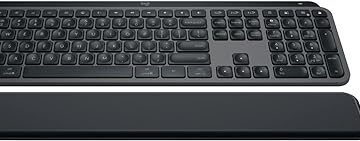







![Apple Watch SE (2nd Gen) [GPS 40mm] Smartwatch with Starlight Aluminum Case with Starlight Sport Band S/M. Fitness & Sleep Tracker, Crash Detection, Heart Rate Monitor](https://www.tech-bit.com/wp-content/uploads/2024/06/applewatchse2ndgengps40mmsmartwatchwithstarlightaluminumcase-360x180.jpg)







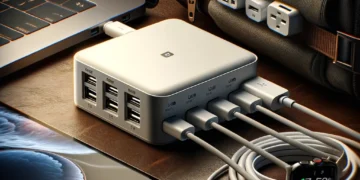








![Apple Watch Series 9 [GPS 45mm] Smartwatch with Midnight Aluminum Case with Midnight Sport Band S/M. Fitness Tracker, ECG Apps, Always-On Retina Display, Water Resistant](https://www.tech-bit.com/wp-content/uploads/2024/06/applewatchseries9gps45mmsmartwatchwithmidnightaluminumcasewith-360x180.jpg)



![Apple Watch Ultra 2 [GPS + Cellular 49mm] Smartwatch, Sport Watch with Rugged Black Titanium Case with Black Ocean Band. Fitness Tracker, Precision GPS, Action Button, Extra-Long Battery Life](https://www.tech-bit.com/wp-content/uploads/2024/10/applewatchultra2gpscellular49mmsmartwatchsportwatchwithrugged-360x180.jpg)

